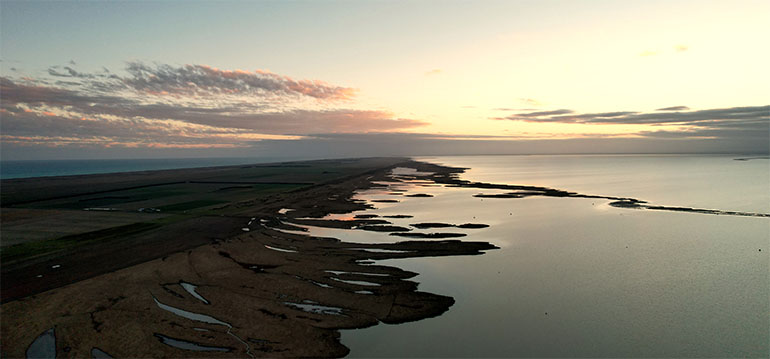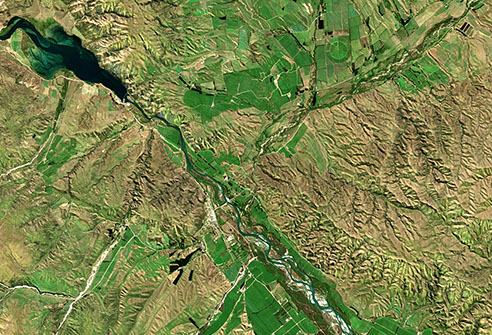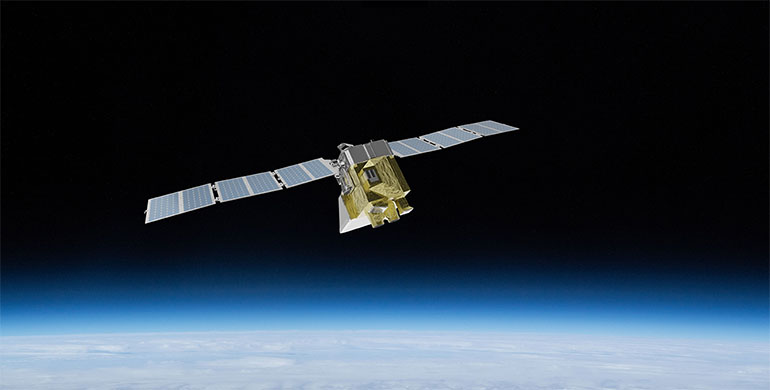Modelling sustainable space and Earth environments
Sustainability supports our economic, national security, regulatory and international interests in space. We want to ensure that both space and Earth environments are sustainably used to preserve their benefits for future generations.
On this page
Objectives
The New Zealand government advocates for the sustainable use of space to ensure its benefits remain available to future generations. At the same time we seek to use space, and space technologies, to gain understanding and better protect our environment on Earth.
Specifically this means:
- Encouraging inclusive, sustainable space collaborations within New Zealand
- Assessing the cumulative impact of space activities on the Earth environment
- Assisting with solving sustainability challenges through space data, including to better monitor or understand the Earth's environment
- Investing in New Zealand’s capability to retain, grow, access and use sustainable space technologies
Encouraging inclusive, sustainable space collaborations within New Zealand
Mātauranga Māori and space are deeply connected, with space representing whakapapa (genealogical links to the beginning of the universe), wairuatanga (the spiritual connection between Earth and the universe, derived from Māori cosmology), and tātai arorangi (Māori knowledge of astronomy). The government aims to provide opportunities for Māori including, but not limited to, partnering with the space sector, and one way of doing this is through a joint venture such as Tāwhaki.

Sunrise over Kaitōrete Spit, Canterbury, January 2022.
Tāwhaki
Tāwhaki is a new and unique commercial joint venture partnership co-designed and co-developed between Te Taumutu Rūnanga, Wairewa Rūnanga (together as Kaitōrete Limited) and the Crown. The joint venture has secured 1,000 hectares of land on Kaitōrete Spit in Canterbury with the purpose to:
- Protect and rejuvenate the Kaitōrete environment, an area of significant cultural importance to the Rūnanga and home to numerous threatened and locally endemic plant, invertebrate, bird and reptile species, with internationally recognised ecological value.
- Develop aerospace activities and R&D facilities that have the potential to generate significant and sustainable economic opportunities through job creation, capital investment and adjacent sectors serving the aerospace economy.
In line with the values and objectives outlined in this document, Tāwhaki is an example of the New Zealand space sector in:
- Innovation: developing aerospace (space and advanced aviation) activities and research and development facilities that can generate significant, sustainable economic opportunities through jobs, capital investment and adjacent sectors that serve the aerospace economy.
- Partnership: a commercial joint venture between Kaitōrete Limited and the Crown. Kaitōrete Limited is represented by two Ngāi Tahu Rūnanga: Te Taumutu Rūnanga and Wairewa Rūnanga.
- Stewardship: protecting and rejuvenating the environment at Kaitōrete Spit for future generations.
Project Tāwhaki: A unique partnership for Kaitōrete [PDF, 3.7 MB]
Assessing the cumulative impact of space activities on the earth environment
In New Zealand, there are now more frequent launches and launch vehicles returning to Earth. This gives us the opportunity for further research on the cumulative impacts these space activities have on air, land and sea, compared with those of commercial aircraft.
With regard to assessing impacts on the maritime domain, The International Maritime Organization recognises the emerging issue of rocket launch debris, and the impacts this may have. However, little is known about the cumulative impact that launch debris has on the world’s marine environment.
In 2016, NIWA assessed the ecological risks to New Zealand’s marine environment from launch debris.[26] This assessment has informed New Zealand legislation on permissible space launch deposit in our exclusive economic zone (EEZ).
Assisting with solving sustainability challenges through space data
New Zealand has the potential to lead sustainable space access, including designing sustainable and cost-effective techniques for removing space debris. MBIE has partnered with Japan-based company, Astroscale, on space safety and sustainability including addressing policy challenges and the associated costs of active debris removal missions.
Space technologies and data can also assist with the following sustainability challenges:
- Contributing toward achieving the UN 2030 Sustainable Development Goals[27];
- Assisting New Zealand and our partners with the sustainable use of natural resources, including:
- Mitigating global emissions
- Delivery of education
- Delivery of health care
- Agricultural monitoring
- Humanitarian aid to disaster stricken areas
- Providing early warning of natural disasters
- Improving responses after disasters and emergencies.
- Contributing to objectives within the Climate Change Response (Zero Carbon) Amendment Act 2019[28]
- Monitoring variables that affect crops, such as soil moisture, surface temperature and pest infestations
This data can help us make sustainable decisions, for example, how to most effectively use land, seeds, fertilisers, and water.

Lake Waitaki, Lake Waitaki Dam, and the Waitaki River. Sourced from the Land Information New Zealand (LINZ) Data Set, New Zealand 10m Satellite Imagery 2022.
Investing in New Zealand’s capability to access and use sustainable space technologies
Investing in New Zealand’s capability to access and use sustainable space technologies will enable New Zealand to understand and mitigate a range of global issues. For example, space-based data can help us understand and mitigate global emissions. The MethaneSAT space mission is an example of New Zealand’s involvement with international initiatives that will benefit all New Zealanders.
MethaneSAT space mission: measuring and mapping methane emissions to mitigate climate change
The MethaneSAT space mission is developing a satellite that is scheduled to be launched in 2023. The satellite will quantify and map global methane emissions, and contribute to the mission’s goal of speeding up a reduction in methane emissions from oil and gas infrastructure by at least 45% by 2025.
The Environmental Defense Fund[29] and its subsidiary MethaneSAT LLC are leading the mission. New Zealand is investing $26 million in the mission, which will fund the Mission Operations Control Centre for the satellite. It will also fund research on using the satellite’s data to identify and measure methane emissions from agricultural sources in New Zealand and around the world.
Our investment will build important capability in our space sector, as our researchers will get to work with world leading atmospheric scientists. The work will also make an important contribution to slowing down global warming.
The Mission Operations Control Centre will be developed by Rocket Lab and hosted by the University of Auckland’s Te Pūnaha Ātea (Auckland Space Institute). The New Zealand science team will use data from the mission to collaborate with our international partners to reduce methane emissions from agriculture.
For more information about MethaneSAT, visit: MethaneSAT space mission

Credit: Ball Aerospace.
[26] NIWA. (2017). Ecological risk assessment of the impact of debris from space launches on the marine environment [PDF 7.1 MB](external link) — Ministry for the Environment
[27] See Sustainable Development Goals(external link) — United Nations: Department of Economic and Social Affairs
[28] Climate Change Response (Zero Carbon) Amendment Act 2019(external link) — Ministry for the Environment
[29] The Environmental Defense Fund is an American non-governmental organisation.
< Promoting the responsible uses of space internationally | Home

